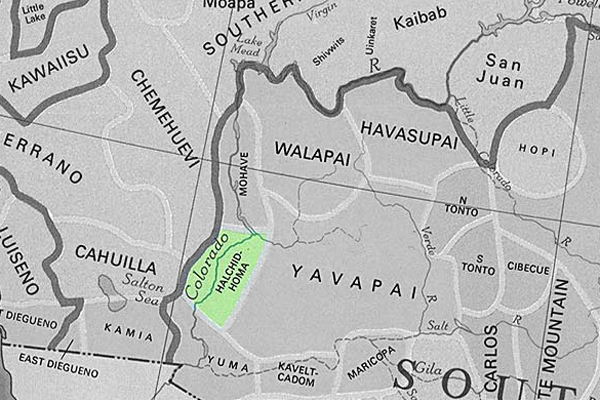The Halchidhoma (also spelled Halchidoma or Haltchidhoma) was a Native American tribe historically inhabiting the southwestern United States. They were part of the Yuman language-speaking people and lived in the lower Colorado River region, particularly in what is now Arizona and California. The Halchidhoma were closely related to other Yuman-speaking groups, such as the Mojave, Quechan, and Cocopah.

The Halchidhoma people were known for adapting to the desert environment and were skilled at fishing, hunting, and gathering resources in the arid landscape. They utilized the Colorado River for sustenance, catching fish, and utilizing plants for food, medicine, and other purposes.
However, the Halchidhoma tribe faced significant challenges with the arrival of European colonizers and the subsequent westward expansion of the United States. The disruption caused by the influx of settlers, diseases, and conflicts with other Native American groups and European colonists contributed to the decline of the Halchidhoma population.
Over time, the Halchidhoma people faced displacement, and their distinct tribal identity gradually faded. Today, the Halchidhoma are considered one of the many Native American groups whose historical presence has diminished, and their cultural heritage is often studied through archaeological and historical records.
It’s important to note that the history of Native American tribes is complex, and various factors, including interactions with European settlers, government policies, and environmental changes, have shaped their experiences.